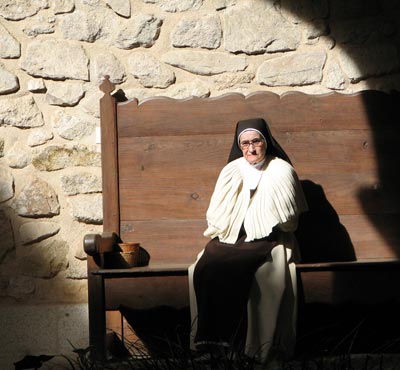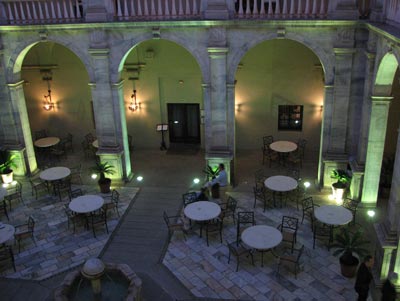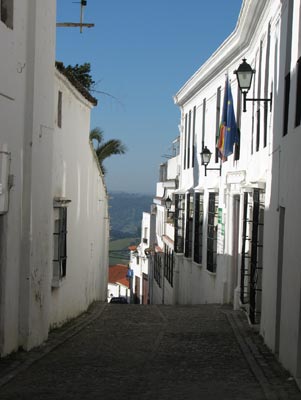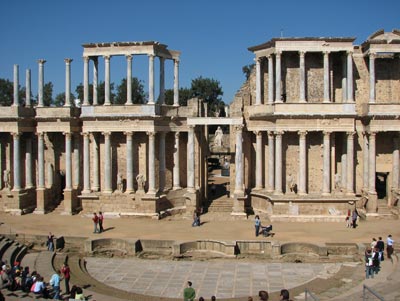Exploring Spain's Extremadura
by Beth Habian, Features Editor
So, it’s time to plan your next trip and you’re thinking… Europe. But you’d like to venture to a place not yet overrun by tourists, an area of rugged, natural beauty, one where the streets of the local towns still whisper the secrets of those who walked there centuries ago. Is there such a place left to be discovered? I believe there is, and it’s called Extremadura.
An introduction
Extremadura is an autonomous community in western Spain, bordering Portugal. Characterized by mountainous terrain, it is renowned for its varied wildlife and is especially popular with bird-watchers.
It is also a place of pilgrimage, drawing large numbers of the devoted to the shrine of Our Lady of Guadalupe, one of three Black Madonnas in Spain.
But it is perhaps best known as the home of the conquistadores, a good number of whom were born in the area and returned after amassing their treasures, leaving their mark on towns such as Trujillo and Cáceres.
In March ’08 I had the opportunity to visit the area as part of a historically focused tour offered by Martin Randall Travel (phone +44 [0] 20 8742 3355, www.martinrandall.com), based in London.
The only American on the tour, I enjoyed the enthusiastic company of my fellow travelers, many of whom were veteran Martin Randall tour takers. Singing the praises of the quality of the company’s offerings during our first night’s dinner, they left me with great expectations for the eight days to come.
The focus
We began our journey in the town of Zafra, where we were introduced to our group’s lecturer, Adam Hopkins, and his wife, Gaby Macphedran, who served as our tour director. Jumping straight in, Adam gave an overview of the region to familiarize us with Extremadura’s place in history.
A font of knowledge, he would regale us with information on each area we visited, from its historical connections to its importance to the people living there today, even throwing in a bit of local politics for good measure (our visit was very close to the election date for Spain’s prime minister).
One thing that travelers should be aware of when thinking about booking this particular itinerary is that it focuses on the history of Extremadura and the people connected to the region.
Martin Randall specializes in small-group tours, each with a particular theme: art, architecture, gastronomy, archaeology, music or history. And they’re serious about it; their 8-day music tour of Berlin, for instance, includes three operas plus a concert.
You don’t by any means have to be an expert in the area or the subject you’ve chosen (that’s what the highly educated lecturers are for), but to get the most out of your tour you should possess a genuine interest in the topic.
The other notable thing about this tour is that it involves a great deal of walking, and most of the towns visited feature hilly, cobbled pathways. Alternatives are provided for those not wishing to climb the steep streets and stairs, but some of the interesting sites on the schedule might be missed.
There were two optional walks on this tour as well. I missed the first, through the Sierra de Guadalupe mountains, because I had caught a nasty head cold. However, those who did participate returned with ruddy cheeks, after about four hours of walking the undulating hillsides, and reported that it was quite taxing.
I did take part in the second walk, which took us from a cattle farm visit through a lovely rural landscape. This walk was quite a bit shorter and on a level trail and I thoroughly enjoyed it.
The sights
We visited a number of quaint Spanish towns where we found beautiful plazas, cathedrals, museums and even some Roman ruins. My favorite town of the trip had to be Trujillo, where getting off the bus felt like stepping back in time, its narrow, climbing walkways winding their way through centuries-old stone buildings.
Right at the top of my list as well was our visit to Mérida with its Roman ruins and spectacular museum of Roman artifacts. The Museo Nacional de Arte Romano was definitely worth the visit.
I was touched by our visit to the monastery at Guadalupe, seeing pilgrims singing, crying and kissing an image of the Virgin as they filed past the ornately dressed statue. And I had a really enjoyable day out at the Finca El Vaqueril, riding in an open bed behind a tractor to see this family-run farm with its beautiful Retinto cattle.
Our morning walking tour of Cáceres, though accompanied by unseasonably cold weather, was also wonderful — made ever the more enjoyable by the narration of the fabulous local guide.
For the first-time visitor to Spain this might not be the right tour, as the towns visited are a bit more austere than the more grandiose cities of, say, Barcelona and Seville, but for those looking for an educational look at an authentic, little-visited section of Europe, it could be the perfect fit.
The food
Most meals during our nine days in Spain were included in the price of the tour, and the food, in general, was good. Hotel breakfasts were basic but adequate and offered a variety of selections. We had a few group members who required special dietary considerations, and at every meal Gaby made sure they were accommodated. (Martin Randall asks that participants indicate any special dietary requests in their pretour correspondence.)
One standout meal was at the Finca El Vaqueril, where our starter of fresh tomato and goat cheese was incredibly tasty. Our evening at Restaurante Torre de Sande in Cáceres was also notable. The menu was creative (filet of sole stuffed with mushrooms and prawns and steak stuffed with figs), and each dish was beautifully presented. Fixed-menu prices averaged €35 ($54).
The included meals on this tour were preselected, but there was ample opportunity to select the items of my choice during several independent lunches and two independent dinners. I was a bit concerned about dining independently, as most locals didn’t speak English and my Spanish vocabulary includes only about a dozen words, but Adam and Gaby always welcomed those not wishing to venture out on their own to join them, kindly offering their assistance with menu selections.
For one lunch, in Cáceres, a small group of us decided to give a local restaurant a try. The staff at Restaurante El Racó de Sanguino (Plaza de las Veletas, 4) kindly opened a bit early for us (meals in Spain start later, and the restaurant was scheduled to open for lunch about a half hour later at 1:30), and we were the only diners in the restaurant.
Prices were slightly higher than average, as the restaurant is located in the old section of town (my monkfish entrée cost €21, or about $33), but the food was wonderful, the service, friendly and unrushed, and the little extras — an amuse bouche before the meal and a complimentary handmade truffle to accompany the after-meal coffee — made this an extra-special memory.
To keep us going between meals, every day included at least one stop for coffee, tea or other beverage.
The accommodations
With the exception of the modern hotel in Cáceres, which was still nice and very well located, the hotels in which we stayed belonged to the Paradores of Spain group, adding an extra sense of authenticity to this tour.
Hotel Parador Hernán Cortés in Zafra boasted a beautiful arcaded central courtyard, perfect for escaping the heat and enjoying a cocktail, while the Parador de Jarandilla de la Vera, where we spent our final night in Spain, once served as the home of Emperor Charles V.
All of the properties were lovely and included the usual amenities. The only complaint I can make is regarding my room at the Parador de Jarandilla de la Vera, which was situated in a newly refurbished section of the property.
The room was beautifully decorated and included a sleek, contemporary bathroom, but while lying in bed trying to get to sleep, I could hear every sound the people in the room above me were making, down to the swishing of water in a bathtub. Others staying in this section, on the lower level of the hotel, expressed similar problems, but those staying in rooms in the older section seemed to fare better.
The details
Martin Randall’s 2009 Extremadura tour is scheduled for March 13-21. The all-inclusive cost of £1,940 ($3,820) per person includes round-trip airfare from London Gatwick to Spain, all meals as noted on the itinerary (with wine), and all gratuities for waiters, drivers and guides. Single supplement is £285 ($561).
This tour operates with a minimum of 12 and a maximum of 22 participants.
Beth Habian was a guest of Martin Randall Travel.






